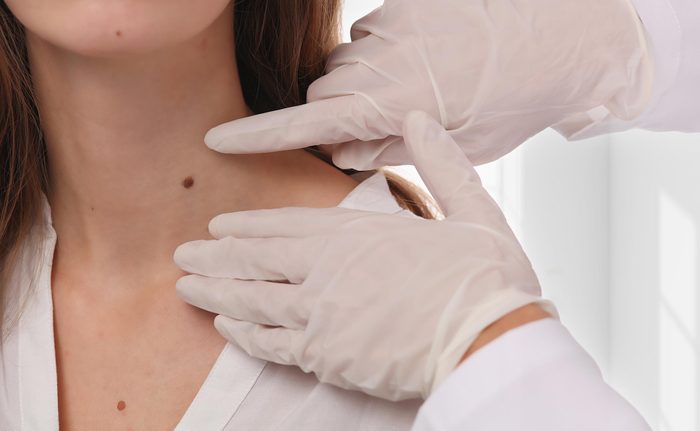
Who should check for skin cancer symptoms?
Everyone should get familiar with the beauty marks and moles on their body but individuals of Irish, Scottish, English, and Nordic descent are usually fairer, and thus more at risk for skin cancer, according to Brian Hinds, MD, an assistant professor of dermatology at UC San Diego Health. It’s even more important if you have a family history of melanoma or more than 50 moles on your body, says Anna Di Nardo, MD, PhD, an associate professor dermatology at UC San Diego Health, adding you should see a dermatologist at least once a year. But if you are someone who spends loads of time in the sun, it’s smart to get checked by a doctor no matter what type of skin you have. Ready to start? When it comes to skin cancer symptoms think ABCDE: Asymmetry, uneven Border, Color variation, large Diameter, and Evolving. Also, make sure you know the skin cancer myths you need to stop believing.
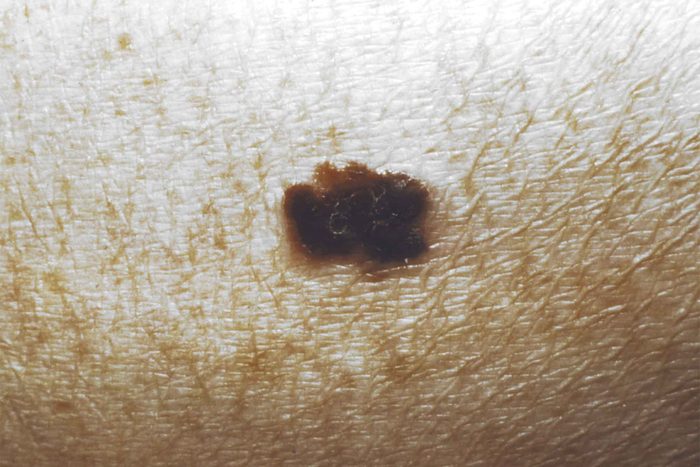
What to look for: Asymmetrical moles
The first thing to look out for when looking for skin cancer symptoms is asymmetry, Dr. Hinds says. If you were to fold this melanoma in half, it wouldn’t match. Don’t miss these surprising places you didn’t know you could get skin cancer.
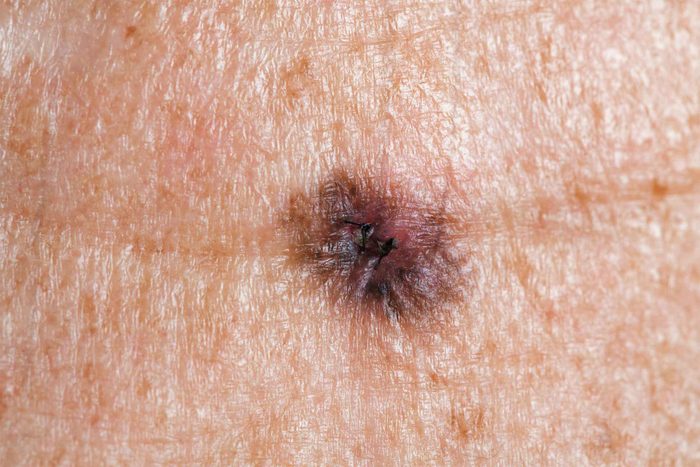
What to look for: Poorly defined borders
Notice how the borders are not sharp, like a typical beauty mark, says Anna Pavlick, DO, a medical oncologist with NYU Langone Medical Center in New York. With skin cancer the borders may look “clover-leafy” or wrinkly, she adds.
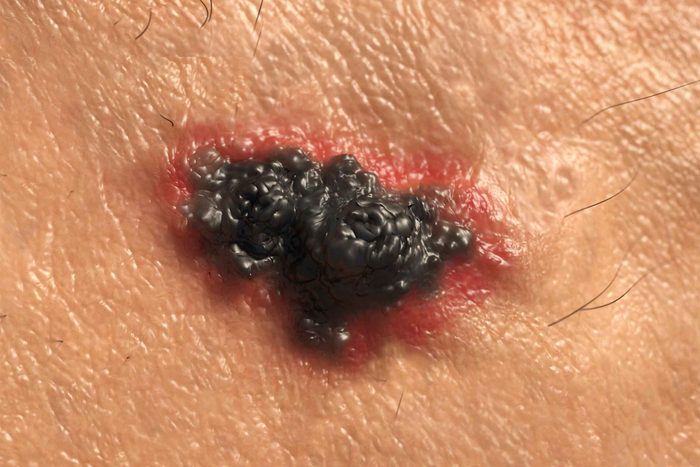
What to look for: Color variation
If the mole’s color changes from one area to the other, see a dermatologist, as it could be a clear skin cancer symptom, Dr. Di Nardo says. This melanoma’s pigment ranges from dark brown in the center to tan, to almost pink at the borders that bleed into the skin. Skin cancer can also appear black, white, red or blue, she adds. This is the worst skincare advice dermatologists have ever heard.
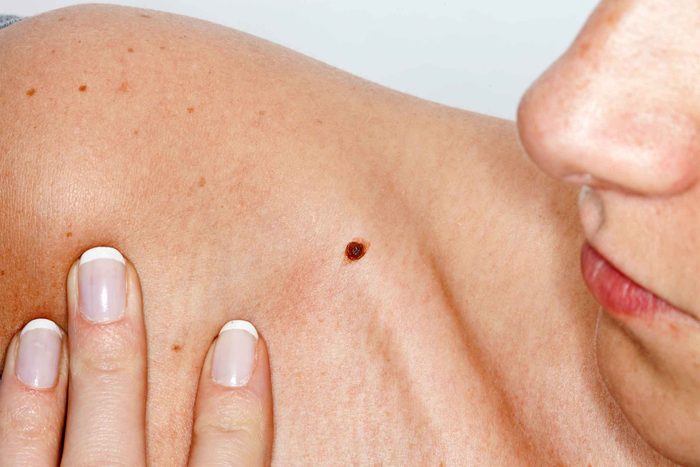
What to look for: Size
Melanomas are usually larger than 6 mm in size, about the size of a pencil eraser, but can start much smaller when they’re first diagnosed. “Depending on the depth, how deep the mole grows down under the skin, that will dictate the surgical procedure to remove it,” says Dr. Pavlick. Once the melanoma gets to be greater than a millimeter, doctors will usually remove between 1 and 2 centimeters beyond the dark spot to ensure all the cancer has been removed.
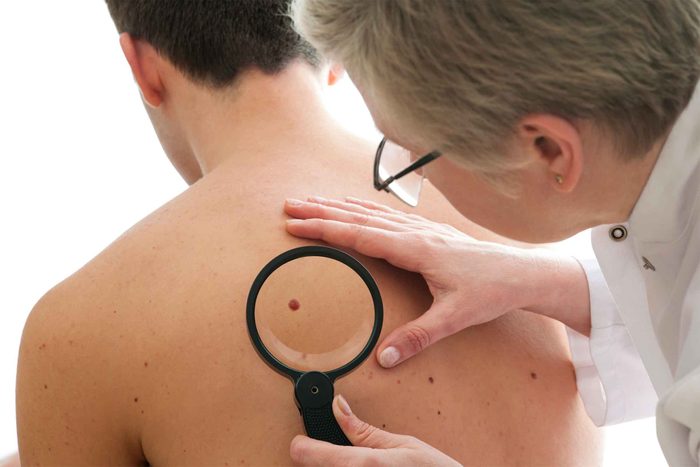
What to look for: Moles that change over time
Keep an eye out for moles that begin to look unfamiliar, Dr. Hinds says. Beauty marks that evolve, changing in color, shape, and size can signify melanoma. These are the skin cancer risk factors you might not know about.
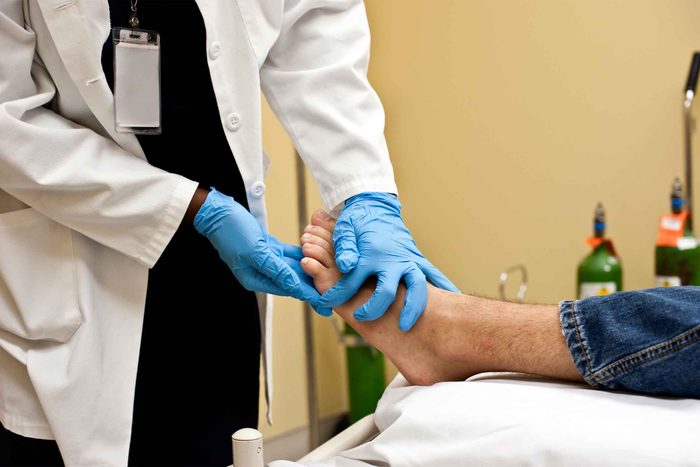
Check places you wouldn’t normally think of
It makes sense to check for skin cancer in places exposed often to sunlight but deadly melanoma can lurk in strange places, like the scalp, palms of the hand, feet, fingernail beds, genital area, and even in your eyes, Dr. Hinds says. Moles in these areas can often go unnoticed and are therefore diagnosed much later, leading to a worse prognosis so make sure you’re checking everywhere. Ask a partner to help you with the areas you can’t see easily. Here are some other places you may be ignoring when you check for skin cancer symptoms.